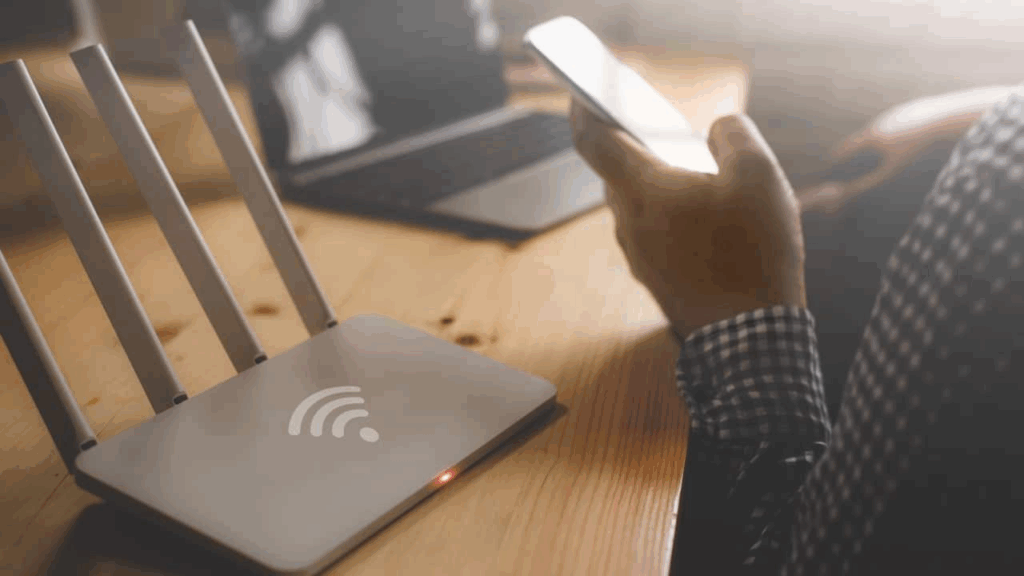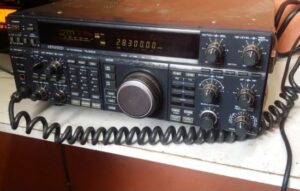In a world where connectivity is as vital as electricity and water, the Wi-Fi has become the pillar of our digital life.
Whether you're working from home, streaming a movie, talking to family across the world, or just browsing social media, a stable and fast Wi-Fi connection is essential.
While most smartphones make connecting to Wi-Fi a relatively simple process, there's a lot more to the Wi-Fi icon in your phone's status bar.
We often face challenges: the signal is weak, the connection keeps dropping, or you're in an unfamiliar location and need internet access without knowing where to find a reliable network. Beyond basic activation, understanding how to optimize your connection and safely discover open networks can transform your digital experience.
This is where knowledge of your phone's settings and the use of specific apps become true differentiators. They are the key to unlocking Wi-Fi's full potential, turning it not just into a means of access, but into a powerful tool for your productivity and leisure. Get ready to dive into the world of Wi-Fi connectivity and discover how to put total control in your hands.
See also:
- Activate 5G on your mobile
- Turn your phone into a portable projector
- Connection: Your Phone Always Connected to Open Wi-Fi
- Powerful Sound: Transform the Volume of Your Smartphone
- Instant English: Learn for Free and Have Fun
Unveiling Wi-Fi: Much More Than an Icon on the Screen
Wi-Fi, or Wireless Fidelity, is a technology that allows electronic devices to connect to the internet or exchange data wirelessly. It works via radio waves, just like your radio or mobile phone, but using specific frequencies and protocols for data transmission. To understand its importance and how to activate and optimize it, it's crucial to have an overview of what it really means in our daily lives.
The basis of any Wi-Fi connection is a router, a device that receives the internet signal from your provider (via cable, fiber optic cable, etc.) and transforms it into a wireless radio signal, creating a local area network. Your devices, such as smartphones, tablets, laptops, and smart TVs, have internal Wi-Fi adapters that can "listen" and "talk" to that router. When you connect to a Wi-Fi network, your device is communicating directly with the router, which is in turn connected to the internet.
The importance of Wi-Fi in modern life is immense. At home, it eliminates the need for Ethernet cables scattered across the floor, offers the freedom to move around with your devices, and allows multiple devices to efficiently share the same internet connection. In public settings—coffee shops, airports, shopping malls—free Wi-Fi has become an expected benefit, a way to keep people connected on the go. For work and school, the stability and speed of a good Wi-Fi connection are crucial for video calls, transferring large files, and accessing online platforms.
Activating Wi-Fi on Your Mobile Phone: The Easiest Way to Connect
Turning on Wi-Fi on your smartphone is, in most cases, one of the most basic and straightforward operations. Regardless of whether you're using a mobile device, Android or a iPhone, the process has been designed to be intuitive, ensuring that you connect to the Internet without complications.
On Android
For Android users, there are two main ways to turn on Wi-Fi. The most common and fastest is through the Quick Actions Panel either Notification Center. Simply swipe down from the top of your phone's screen. This will reveal a series of icons for quick access. Look for the Wi-Fi, which usually looks like three semicircular arcs or a triangular fan. If the icon is gray or off, it means Wi-Fi is disabled. Tap it to turn it on, and the icon will change color (usually blue or green, depending on the Android version), indicating it's on and searching for networks.
The second, more detailed way is through the menu ConfigurationOpen the Settings app (usually a gear icon). Within the settings, look for "Network & Internet," "Connections," or a similar term. There, you'll find the "Wi-Fi" option. Tap it, and on the next screen, there will be a toggle to turn Wi-Fi on or off. When you turn it on, your phone will begin scanning for available networks nearby.
Once activated, your phone will display a list of detected Wi-Fi networks. Networks with a lock icon next to them are password-protected, while those without a lock are open. To connect to a secure network, tap it, enter the password (if it's your first time), and tap "Connect." Your phone will remember the password for future connections.
On iPhone (iOS)
For iPhone users, the process is equally simple and quick. As with Android, the quickest way is through the Control Center. Swipe down from the top right corner of the screen (on iPhones with Face ID) or from the bottom up (on iPhones with Touch ID). The Control Center will appear with several shortcut icons. Locate the icon Wi-Fi, which resembles three concentric arcs. If it's gray, it means Wi-Fi is off. Tap it and it will turn blue, indicating it's on and searching for networks.
The alternative is to go to the application Settings (the gear icon). Within Settings, tap directly on Wi-Fi. On this screen, you'll see a toggle to turn the feature on or off. When you turn it on, your iPhone will automatically begin searching for available networks.
When the list of networks appears, tap the network you want to connect to. If it's a secure network, you'll be prompted to enter the password. After entering the password and tapping "Connect" or "Join," your iPhone will connect to the network. It will also store the password so you don't have to enter it again in the future.
On both operating systems, after a successful connection, you'll see the Wi-Fi icon in your phone's status bar, usually accompanied by small arcs indicating the signal strength. And just like that, your phone will be connected to the digital world via Wi-Fi.
WiFi Map: Your Key to the World of Free Wi-Fi Connections
In an increasingly connected world, finding a reliable, free Wi-Fi network can be a real ordeal, especially when you're in an unfamiliar location or with limited mobile data. This is where WiFi Map enters the scene, acting as a true guide to the vast universe of public Wi-Fi networks. It's not just a locator; it's a global community that shares passwords and information about Wi-Fi hotspots, transforming the way we connect on the go.
WiFi Map stands out for its collaborative nature. Millions of users around the world contribute passwords for Wi-Fi networks in cafes, restaurants, hotels, airports, and other public places. These passwords are verified and updated by the community itself, ensuring the information is as accurate as possible. Think of it as the "Waze" of Wi-Fi networks, where collective intelligence helps you find the best route to the internet.
Detailed Features of WiFi Map
WiFi Map's feature set makes it indispensable for travelers, students, and anyone who needs connectivity while on the go.
First of all, the Interactive Map with Wi-Fi Access PointsThis is the backbone of the app. When you open it, you'll see a map of your current location with numerous pins indicating available Wi-Fi hotspots. Each pin can represent a free Wi-Fi network at a commercial establishment, a public hotspot, or even networks shared by other users. You can apply filters to search only for free, open networks, or those with shared passwords.
By tapping a pin on the map, the app reveals Detailed Hotspot Information. This includes the network name (SSID), the distance to the point and, crucially, the shared password (if available). Additionally, many hotspots come with user reviews that can offer advice on signal quality, connection stability, or any additional requirements for accessing the network. It's like having a connectivity tour guide for each location.
A notable feature is the Offline ModeYou can download maps of specific cities or regions to use WiFi Map even without an initial internet connection. This is invaluable for travelers arriving in a new country and needing to find Wi-Fi before purchasing a local SIM. The app also features a search function. Navigation, which guides you to the chosen Wi-Fi access point, making the search even more convenient.
How to Install and Use WiFi Map
Installing and using WiFi Map is a straightforward process, designed to make finding a connection quick and easy.
For Android devices, the first step is to open the Google Play StoreIn the search bar, type "WiFi Map" and locate the official app (usually with a map-like logo and a Wi-Fi icon). Tap "Install" and wait for the download and installation to complete. Make sure your phone is connected to the internet (via mobile data or another Wi-Fi network) to download the app.
For iPhones and iPads, the procedure is similar. Open the App Store, type "WiFi Map" in the search bar and select the appropriate app from the results. Tap "Get" and, if prompted, confirm the installation with your passcode, Face ID, or Touch ID. The app will automatically download and install on your device.
When you open WiFi Map for the first time, the app will ask you location permissionsIt's essential to grant these permissions so that Wi-Fi can identify your position on the map and display the nearest Wi-Fi hotspots. Without access to your location, the app's core functionality (the network map) won't work.
With permissions granted, the main WiFi Map screen will display an interactive map. Your current location will be centralized, and you'll see a series of WiFi icons or points of interest around it. You can zoom in and out on the map, and tap any of these icons to view network details, including the network name (SSID) and, if applicable, the password.
Beyond WiFi Map: Other Tools to Manage and Optimize Your Wi-Fi
While WiFi Map is excellent for finding public networks, managing and optimizing your own home or work Wi-Fi connection is also crucial. There are other categories of apps that complement this need, helping to ensure your Wi-Fi experience is always the best possible.
Wi-Fi Analysis Apps
These apps are true "scanners" of your Wi-Fi network, providing detailed information on signal quality, channels used, and interference. They're excellent for diagnosing slow or unstable connections.
A notable example is WiFi Analyzer (OpenSource), available for Android. It displays a graph of the Wi-Fi channels in use in your area, allowing you to see which channels are congested. If your router is using a highly contested channel, the app can suggest a less-used channel, and you can then change that setting on your router to improve performance. This is especially useful in apartment buildings or offices, where many Wi-Fi networks may be competing for the same channels.
For iOS, although system permissions are more restrictive for this type of deep analysis, applications such as Network Analyzer either Fing They can provide information about the devices connected to your network, ping and latency tests, and port scans, which aid in security and basic diagnostics.
These apps are great for users who want to go beyond just connecting and understand the health of their Wi-Fi network.
Speed Test Apps (like Speedtest by Ookla)
Although we've already talked about them in the context of 5G, speed test apps are equally crucial for Wi-Fi. Tools like Speedtest by Ookla allow you to measure the download and upload speed of your Wi-Fi connection and the latency.
This is essential to verify that the speed you're receiving is the same as what your internet provider promises. If you suspect problems with your Wi-Fi connection, running a speed test with your phone connected to Wi-Fi and then connected to mobile data (or a computer via cable, if possible) can help identify whether the problem lies with the Wi-Fi network itself, your device, or your internet provider.
These apps are essential for monitoring performance and ensuring your Wi-Fi connection is delivering what you need.
VPN (Virtual Private Network) Applications
Although they are not Wi-Fi "activators", Wi-Fi applications VPN VPNs are essential for security when using public Wi-Fi networks. When you connect to public Wi-Fi, especially one that doesn't require a password, your data can be vulnerable. A VPN creates an encrypted "tunnel" between your device and the internet, protecting your information from interception by third parties.
There are countless VPN options, both free and paid, such as NordVPN, ExpressVPN, Proton VPN, among others. Using a VPN on unknown Wi-Fi networks is a best practice to protect your privacy and security when browsing, shopping, or accessing sensitive information.
By combining WiFi Map's network discovery power with the network analysis, speed test, and security of a VPN, you'll have a complete arsenal to manage and optimize your Wi-Fi experience, ensuring a fast, stable, and secure connection anywhere.
Essential Tips to Optimize Your Mobile Wi-Fi Connection
First, the golden rule: Keep your mobile phone and router software always up to dateJust as your phone's operating system updates bring performance improvements, firmware updates for your home router (usually accessed from your computer's browser) are crucial. They fix bugs, improve security, and optimize how the router handles Wi-Fi traffic, directly impacting the quality of your connection.
In second place, position your router strategicallyWhere your router is installed makes a huge difference. Place it in a central location in your home, away from thick walls, large metal objects, microwave ovens, cordless phones, and other electronic devices that can cause interference. Height also matters; routers work best when placed in an elevated location, such as a shelf or table.
Third, Use the 5 GHz band whenever possibleMany modern routers operate on two frequency bands: 2.4 GHz and 5 GHz. The 2.4 GHz band has a longer range and is better at traversing obstacles, but it's more susceptible to interference and generally offers lower speeds. The 5 GHz band, on the other hand, offers much faster speeds and less interference, but has a shorter range and is more sensitive to obstacles. For devices closer to the router (like your phone), the 5 GHz band is almost always the best choice for speed. Make sure your phone is connected to the 5 GHz network (usually identified by "5G" in the Wi-Fi name).

Conclusion: Your Wi-Fi Connection, Your Total Control
We've reached the end of our exploration of the world of mobile Wi-Fi. It's clear that wireless connectivity is more than just a convenience; it's the digital oxygen that fuels our personal and professional lives. From basic activation to deep optimization and searching for free networks, control of your Wi-Fi experience is firmly in your hands.
In this article, we uncover how Wi-Fi works, guide you through the activation process on Android and iOS, and dive into the potential of apps like WiFi Map, which transform the search for connectivity into a simple and efficient journey. We also explore other complementary tools and share essential tips to ensure your Wi-Fi connection is always as fast, stable, and secure as possible.
Remember, knowledge is power. By understanding how your phone interacts with Wi-Fi networks, how to use discovery and optimization apps, and how to apply some simple maintenance practices, you'll be prepared to navigate the digital world with confidence and efficiency. Your Wi-Fi connection is the bridge to a universe of information and possibilities, and now you have the tools to ensure that bridge is always strong and open. The future of your connectivity is just a few taps away.









